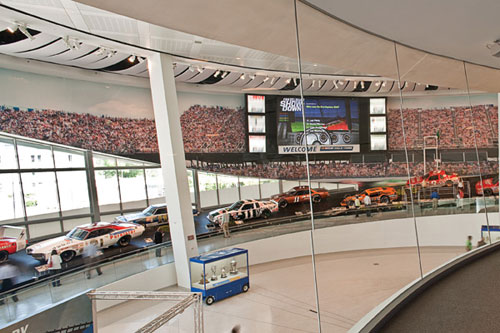Rear-Projection Tiled Digital Media Walls
Benefits
Digital displays are a high-performance solution for communicating information, videos and advertising in interior public spaces. Tiled digital display walls using rear-projection technology can provide several benefits to designers, owners and end users who view the media wall, including the following:
Image quality. Rear-projection tiled digital display walls provide vivid, rich colors and deep blacks, high brightness with no glare, ultra-high resolution, and excellent image quality up close, at a distance, or at any angle.
Versatility. Their modular video building block format presents maximum design freedom. Architects and designers can create any size or shape media display to complement any architectural space or feature.
Sustainability. Rear-projection tiled digital displays are suitable for Leadership in Energy and Environmental Design (LEED) projects, and can consist of as much as 80 percent recyclable and 90 percent recoverable materials.
Reliability and longevity. The combination of proven DLP® and LED technology used in rear-projection tiled digital displays means they are a sound investment over time. No moving parts, a long-lasting LED light engine, sturdy frames and housing, and durable screens all contribute to longevity and reliability.
Simplicity. Rear-projection tiled digital displays are typically designed to be easy to use and simple to operate. They are lightweight building blocks, and the screen pops off in the front for servicing—a notable advantage over standard LCD or plasma flat-panel displays.
 |
Charlotte, North Carolina's NASCAR Hall of Fame fan billboard, a 24-foot by 14-foot array of rear-projection digital display tiles, integrates high-impact visuals with brightness and clarity when viewed at any angle in a large space. Photo by Sean Busher Imagery |
Selection Criteria
There are many considerations when planning, designing and selecting tiled digital displays for interior spaces, including design issues, sustainability, image quality, interactivity, operations, maintenance and life-cycle costs.









